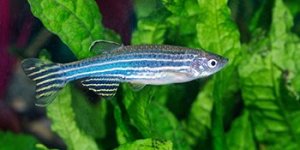| News / Science News |
Scientists develop biodegradable plastic from cassava starch
A team of scientists in Brazil has developed a biodegradable plastic that could be used for food packaging or carrier bags, by applying ozone gas to cassava starch.

Bioplastic from cassava starch is as tough as traditional plastics made of petroleum, researchers say. Photo: IITA
The ozone (O3) gas changes the molecular properties of the starch from the root vegetable to produce a bioplastic 30 per cent tougher than those made of the starch of potato, rice or maize, the researchers say.
The world currently produces around 300 million tonnes of plastic waste every year — equivalent to the weight of the entire human population — according to UN Environment.
Carla Ivonne La Fuente Arias, a chemistry engineer at the University of São Paulo’s Luiz de Queiroz College of Agriculture, told SciDev.Net: “Our tests indicate that this new technique is able to generate a biodegradable plastic as strong as traditional ones made of petroleum.”
The ozone gas has also enabled them to improve the transparency of the cassava-based plastic.
Bioplastics are considered less harmful to the environment because they may be decomposed by the action of living organisms, carbon dioxide (CO2), biomass or water.
An estimated 8.9 billion tonnes of virgin plastic (non-recycled) and secondary plastic (produced from recycled products) have been manufactured since the middle of the last century, when plastics began to be produced on an industrial scale.
About two-thirds of this total — 6.3 billion tonnes — has been discarded as waste, while 2.6 billion tonnes is still in use, according to a study published in 2017 in Science Advances.
The manufacture of virgin plastic so far in the 21st century is equivalent to the volume produced in the previous 50 years. In 2016, production reached 396 million tonnes, says a report by the World Wildlife Fund (WWF) published in March this year.
WWF’s projections indicate that if the increase in production is not contained, the world will have to deal with about 550 million tonnes of the material by 2030. (SciDev.Net)
YOU MAY ALSO LIKE





